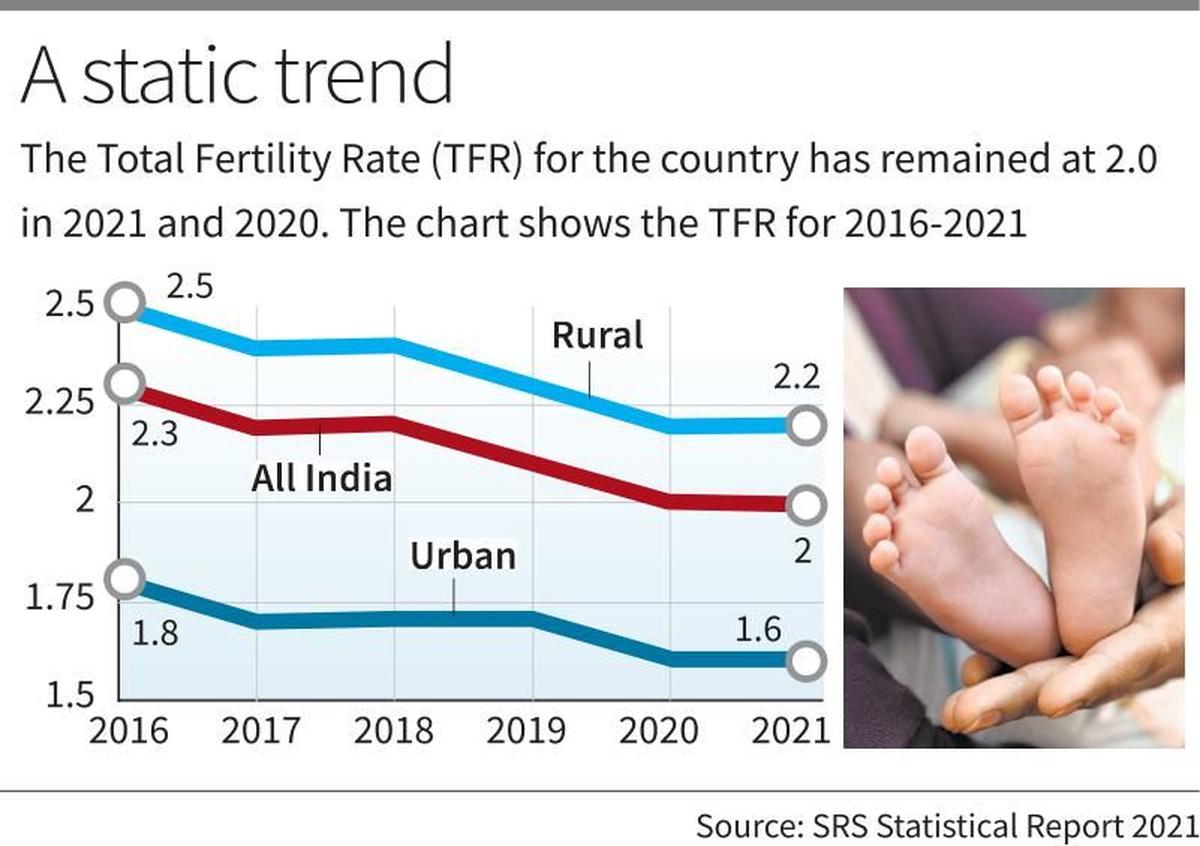Context:
India's Total Fertility Rate (TFR) has remained unchanged at 2.0 in 2021, mirroring the figure from 2020, according to the Sample Registration System (SRS) report released by the Registrar General of India (RGI) on May 7, 2024.
About TFR:
The Total Fertility Rate (TFR) is the average number of children a woman is expected to have in her lifetime, assuming she lives to the end of her reproductive years and experiences current age-specific fertility rates throughout her life,. It is measured as the number of children per woman.
· TFR is a crucial demographic indicator that helps assess the fertility level of a population and its potential for growth or decline. A TFR of 2.1 is generally considered the replacement level, meaning that on average, each woman will have enough children to replace herself and her partner.
· The current national TFR is slightly below the replacement level of 2.1, the threshold at which a population exactly replaces itself from one generation to the next without migration.
State-Wise Fertility Rates:
While the national average reflects near-replacement fertility, state-level data reveals significant disparities:
- Bihar recorded the highest TFR at 3.0, well above the national average, reflecting high fertility trends in certain socio-economic settings.
- Delhi and West Bengal posted the lowest TFRs at 1.4, indicating a steep decline in fertility and potentially signaling long-term demographic aging if the trend continues.
Other states that have achieved or dropped below replacement levels include:
- Tamil Nadu, Kerala, Maharashtra, Punjab, Andhra Pradesh, and Jammu & Kashmir, all with TFRs at 1.5.
- Gujarat and Haryana recorded TFRs at 2.0, aligning with the national average.
- Assam, at 2.1, has exactly reached the replacement level.
Demographic Shifts:
1. Decline in the Young Population
The share of children in the 0–14 age group has sharply declined over the decades:
- From 41.2% in 1971 to 24.8% in 2021.
This reflects lower birth rates and improvements in family planning and female education.
2. Growth in the Working-Age Population
The economically active segment of the population aged 15–59 years has expanded:
- From 53.4% in 1971 to 66.2% in 2021.
3. Rising Elderly Population
Kerala leads with the highest proportion of elderly at 14.4%, followed by Tamil Nadu (12.9%) and Himachal Pradesh (12.3%). States with the lowest elderly shares include Bihar (6.9%), Assam (7%), and Delhi (7.1%).
Conclusion:
India’s steady TFR at 2.0 marks a demographic milestone, with several states already below the replacement level. The convergence toward lower fertility, rising marriage age, and increasing elderly population indicate that India is undergoing a profound demographic transition.
This period presents both opportunities and challenges—from reaping the demographic dividend to preparing for an aging society. Policymakers will need to craft nuanced, data-driven strategies to manage this shift effectively and ensure inclusive and sustainable growth for the decades ahead.







